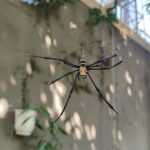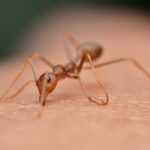Rasberry Ants: A Growing Invasive Threat in Your Home and Garden
Rasberry ants, also known as tawny crazy ants, are an invasive rasberry crazy ants species rapidly spreading in homes and gardens. These tawny crazy ants’ large colonies consist of reddish brown ants that predominantly nest outdoors. Tawny crazy ant workers commonly tend sucking hemipterous insects such as aphids, scale insects, and whiteflies, which produce a sugary carbohydrate liquid called honeydew. This symbiotic relationship causes the ants to feed on honeydew and aggravates sucking insect pests, Hemiptera, leading to further damage to plants and agriculture. Rasberry crazy ant colonies can cover large areas, making them a destructive pest species that displaces native ant species and harms electrical systems. This guide will help you identify and manage them effectively.
- Rasberry ants have 12-segmented antennae and, unlike many ants with stingers, worker ants possess an acidopore at the end of their abdomen, allowing them to spray formic acid defensively.
- Originating from South America, these semi tropical ants have spread across the U.S. primarily through human activities, transported via almost any infested container, garbage, yard debris, bags, potted plants, and other materials moved by truck, railroad, and airplane.
- Effective management requires a combination of typical control tactics, including cultural controls such as removing fallen limbs, rocks, leaf litter, and adjusting moisture conditions, chemical treatments like the use of advanced carpenter ant bait formulation, and professional pest control services.
Identifying Raspberry Ants
Rasberry crazy ants are medium-small, about 1/8 inch long, with a uniform size across the colony. Their coloration ranges from reddish brown ants to golden-brown, sometimes appearing darker depending on individual ants. Their bodies are covered with long, coarse hairs. The 12-segmented antennae lack a distinct club, and the absence of a stinger distinguishes them as formicine ants. Instead, they possess an acidopore that sprays formic acid for defense.
Recognizing raspberry ants aids in managing them effectively. Their erratic foraging behavior, often in loose trails covering large areas, distinguishes them from other ants. Tawny crazy ant workers forage both outdoors and ants foraging inside structures, frequently tending sucking hemipterous insects such as aphids, scale insects, and whiteflies. Their presence in large numbers can cause crazy ants to cover the ground and vegetation, making infestations highly visible.
Origin and Spread
Originally from rural and urban areas of South America, particularly Colombia and Brazil, the invasive rasberry crazy ant was first discovered in Texas near Houston in 2002. These semi tropical ants have spread primarily through human activities, hitching rides on almost any infested container, garbage, yard debris, bags, potted plants, and other materials transported by truck, railroad, and airplane.
The colonies by truck, railroad, and airplane have facilitated their rapid spread across several Texas counties, posing a serious pest threat. Their ability to establish in new areas highlights the importance of monitoring and containment.
Ecological Impact
Rasberry ants are a serious pest in rural and urban areas due to their displacement of other ant species, including red imported fire ants. Their colonies covering large areas affect ground and tree nesting birds and other small animals, causing wildlife to move out of infested zones.
These ants also cause significant damage to electrical equipment by accumulating in circuits and clogging switching mechanisms, leading to equipment failure and costly repairs. Their symbiotic relationship with sucking insect pests, hemipterans, such as aphids, scale insects, and whiteflies, exacerbates agricultural damage by protecting these plant-feeding insects.
Additionally, small livestock, e.g., chickens, have been reported to suffer from heavy infestations, and larger animals have been attacked around sensitive areas such as nasal fossae and hooves.
Behavior and Nesting Habits
Rasberry crazy ant colonies predominantly nest outdoors, often under fallen limbs, rocks, leaf litter, and similar debris. Their nests primarily occur outdoors, but worker ants commonly forage indoors, searching for food and moisture.
Colonies are polygyne with multiple female ants queens, enabling rapid population growth. Female forms called sexuals (winged males and females) are present during reproductive phases, contributing to colony expansion.
These ants exhibit a fascinating and somewhat alarming foraging behavior. Worker ants forage erratically but can form large trails that extend for several meters, often following structural features like walls, fences, and tree trunks. This erratic movement, combined with their rapid numbers increase, can overwhelm areas in a short time.
The worker ants commonly tend sucking hemipterous insects, including aphids, scale insects, and whiteflies, which excrete honeydew, a carbohydrate-rich liquid. This mutualistic relationship benefits the ants by providing a steady food source while protecting the hemipterans from predators and parasites, inadvertently increasing plant damage.
Seasonal Patterns
Rasberry crazy ant populations fluctuate seasonally. They exhibit low activity during cooler months, with peak populations in the warm summer and fall seasons. Their ground migration and spread are influenced by temperature and moisture, with crazy ants preferring humid environments.
During the warmer months, colonies expand rapidly, and the number of foraging worker ants increases substantially. This seasonal surge leads to more frequent encounters with humans and greater impacts on electrical systems and agriculture.
Current Distribution
Since their initial discovery, raspberry ants have been found in numerous Texas counties, with high densities in urban and suburban areas. Their semi tropical nature limits northern spread, but ongoing monitoring is essential to prevent further expansion.
They have been confirmed in counties including Harris, Brazoria, Fort Bend, Galveston, and many others, with new infestations suspected beyond these areas. The ants’ ability to spread via human transportation means that vigilance is necessary in all potentially affected regions. For more information on handling ant infestations, professional pest control services are available.
Management Strategies
Effective management of rasberry ants requires integrated pest management combining typical control tactics:
- Cultural Controls: Remove harborage such as fallen limbs, rocks, leaf litter, and potted plants. Reduce moisture by adjusting irrigation and repairing leaks to discourage crazy ants that prefer humid habitats.
- Chemical Treatments: Use targeted insecticides, including advanced carpenter ant bait formulations containing abamectin, and barrier treatments with products like fipronil or pyrethroids. Reliance on indoor treatments alone is insufficient due to their predominantly outdoor nesting habits and predominantly nest outdoors reliance on indoor foraging behavior.
- Professional Pest Control: Engage professional pest control providers for comprehensive treatment plans addressing both outdoor nests and indoor foraging ants.
After chemical treatments, dead ants must be removed to allow effective reapplication and surface treatment.
It is important to note that tawny crazy ant workers are not attracted to most bait products, limiting control options. The advance carpenter ant bait formulation is one of the few worker ants bait products that shows some effectiveness but should be used as part of a broader management strategy.
Landscape modification plays a critical role in control efforts. By eliminating moisture sources and potential nesting sites, the environment becomes less hospitable to these ants. Managing populations of honeydew-producing insects such as aphids, scale insects, and whiteflies using systemic insecticides can reduce the ants’ food sources and help control their populations.
Reporting Sightings
Reporting sightings helps monitor and control tawny crazy ant populations. Collect specimens in sealed containers with rubbing alcohol, noting the location and date, and submit to local authorities or pest control services.
Additional Considerations
Due to their ability to form supercolonies with multiple interconnected nests, rasberry ants can quickly dominate large areas, making eradication extremely challenging. Their rapid reproduction rates and multiple queens per colony facilitate swift expansion.
These ants also have a unique ability to survive floods by forming floating rafts composed of linked ants, allowing colonies to persist through adverse conditions.
Homeowners and businesses should be vigilant, especially in regions where rodents and rasberry ants have been reported, to prevent infestations from establishing. Rodent control measures are crucial to limiting their spread and impact, Early detection and prompt management.
Environmental and Economic Implications
The presence of raspberry ants can lead to significant economic losses, not only through damage to electrical and agricultural systems but also by increasing costs related to pest control and property maintenance. Their interference with electrical equipment can cause outages and expensive repairs, affecting both residential and commercial properties.
Ecologically, the displacement of native ant species disrupts local biodiversity and can alter ecosystem functions. The ants’ protection of sucking insect pests leads to increased plant damage and reduced crop yields, affecting both natural and agricultural landscapes.
Interaction with Other Pest Species
Rasberry ants often outcompete other invasive ants like red imported fire ants, sometimes neutralizing their venom and dominating territories. This aggressive behavior alters the balance of pest populations, sometimes leading to unforeseen consequences in pest management.
Public Health Considerations
While rasberry ants do not have stingers, their bites can cause minor irritation. Their presence in large numbers around homes and yards can be a nuisance, especially for individuals sensitive to insect bites. Additionally, their ability to harbor and potentially translocate pathogenic microorganisms raises concerns about indirect health risks.
Community Involvement and Education
Public awareness campaigns and community involvement are vital in managing the spread of rasberry ants. Educating residents about identification, reporting, and prevention measures can help slow infestations and reduce impacts.
Community-based monitoring programs can facilitate early detection and coordinated responses, improving management outcomes.
Research and Future Directions
Ongoing research aims to better understand the biology, ecology, and control of raspberry ants. Innovations in bait formulations, biological control agents, and integrated pest management strategies hold promise for more effective and sustainable solutions in the future.
Collaboration between researchers, pest control professionals, and policymakers is essential to address the challenges posed by this invasive species.
Rasberry ants, or tawny crazy ants, are a destructive pest species that predominantly nest outdoors but forage indoors, posing ecological, agricultural, structural, and economic threats. Understanding their biology, spread, and behavior is critical for effective management. Employing integrated pest management strategies, professional services, and community cooperation can help mitigate their impact and protect your home and garden.
Frequently Asked Questions
How to get rid of crazy ants?
Apply non-repellent insecticides such as Taurus SC or FUSE around your home perimeter and use Dominion 2L on foraging trails. Carpenter ant bait formulations like advance carpenter ant bait can be effective when used early in the season. Combining chemical treatments with habitat modification is key.
How did Rasberry Crazy Ants get to the US?
They likely arrived via commercial shipping from South America, transported in almost any infested container, garbage, yard debris, bags, or potted plants.
Why are rasberry crazy ants a problem?
They displace native species, damage electrical equipment by accumulating in circuits and clogging switching mechanisms, exacerbate agricultural pest problems through their symbiotic relationship with sucking insect pests hemipterans, and negatively affect small livestock such as chickens.
What are the key identifying features of rasberry ants?
Small size (~1/8 inch), reddish brown coloration, 12-segmented antennae without a club, presence of an acidopore instead of a stinger, and long coarse hairs.
What ecological impact do rasberry ants have?
They disrupt ecosystems by displacing other ants, affecting wildlife such as tree nesting birds, causing damage to electrical and agricultural systems through their invasive behavior, and impacting small livestock.




